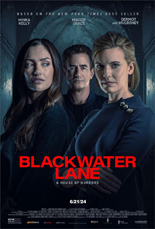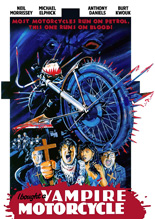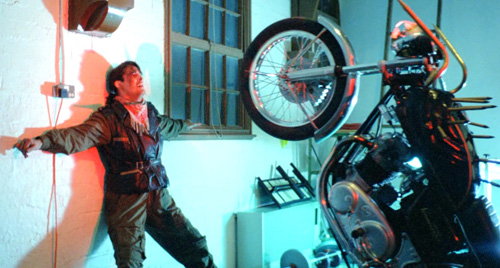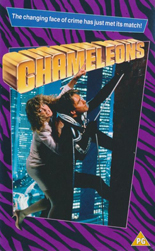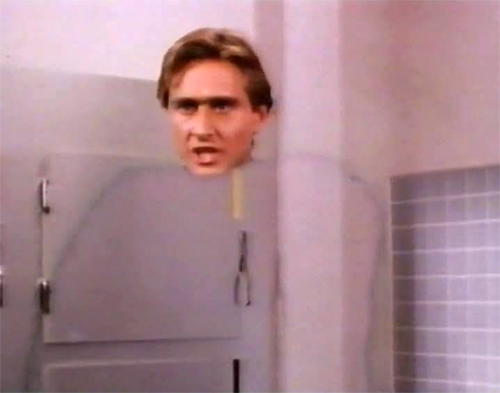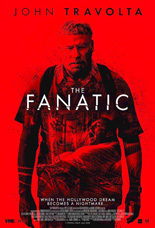
Driving one stormy night, university professor Cass Anderson (Minka Kelly, 2011’s The Roommate) passes a car on the roadside. Behind the wheel, a woman appears asleep, so Cass continues toward home. The next morning, she learns the woman was not only dead, but murdered!
Soon after, strange figures appear in and outside the mega mansion in which Cass and her husband (Dermot Mulroney, Scream IV) live. She receives mysterious phone calls ridden with static. Worse, she seems not to remember things that others in her immediate circle — like her best friend (Maggie Grace, The Hurricane Heist) — do.
Guilt? Haunting? Something else?
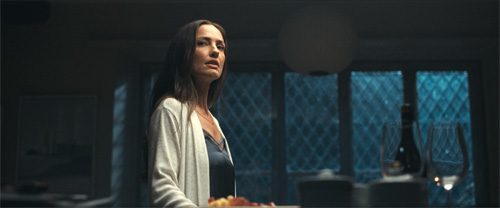
At its foundation, Blackwater Lane is built on the reliable structure of Gothic fiction: the hysterical woman with creaky mansion to match. This house, so big it practically has a moat, is in a remodeling phase (no word if that includes yellow wallpaper), so plastic tarps make the place feel anything but homey. Donning an array of cozy turtlenecks and high-thread nightgowns, Kelly wears the imperiled-wife role well. She’s a better actress than she’s given credit for. Now that she’s aged out of the ingenue phase of her career — you know, back when she was the stuff of lad mags like Stuff — perhaps others can see that.
Although it’s based closely on The Breakdown, a 2017 novel by B.A. Paris, Blackwater Lane reminds me of other movies — specifically, of Psychosis, a Charisma Carpenter vehicle with similar themes, and generally, made-for-cable thrillers of the early ’90s. That latter group is not necessarily a bad thing when its members include Frank Darabont’s Buried Alive, Mick Garris’ Psycho IV: The Beginning, Tobe Hooper’s I’m Dangerous Tonight and Phedon Papamichael’s (who?) Sketch Artist — high-gloss pulp trash one and all, each watchable, of course.
The major problem is this mystery from Jeff Celentano (1998’s Gunshy) is a half-hour too long for a solution not just so easily sussed out by Act 2’s dawn, but teased obliviously ad nauseam thereafter, underestimating viewers’ intelligence. On the page, its machinations likely aren’t the giveaways that the visual medium can’t help but highlight. Then again, I haven’t read the book. Maybe bromidic dialogue like “Well, it’s a mistake. She’s mistaken!” comes straight from the source? —Rod Lott

